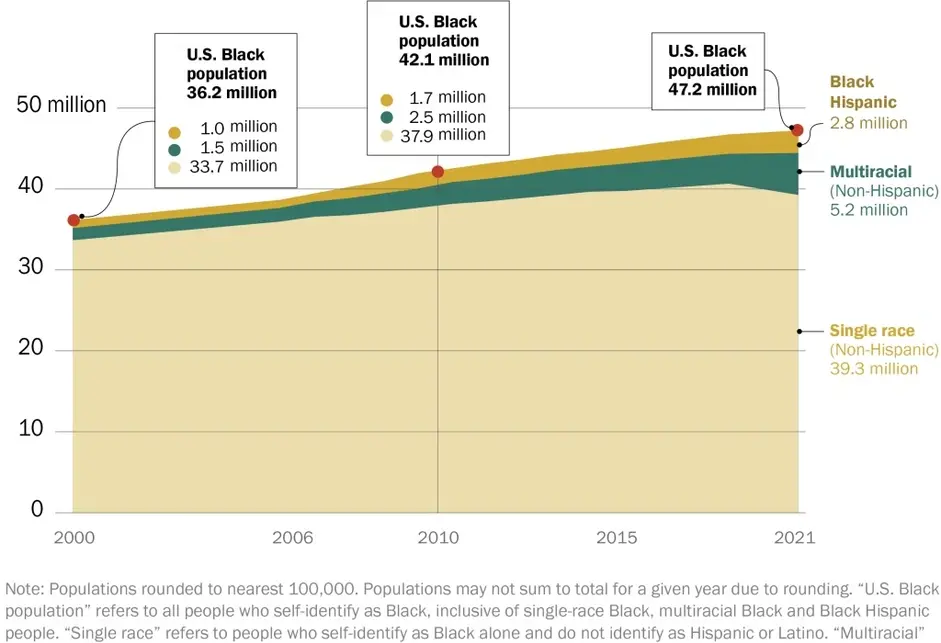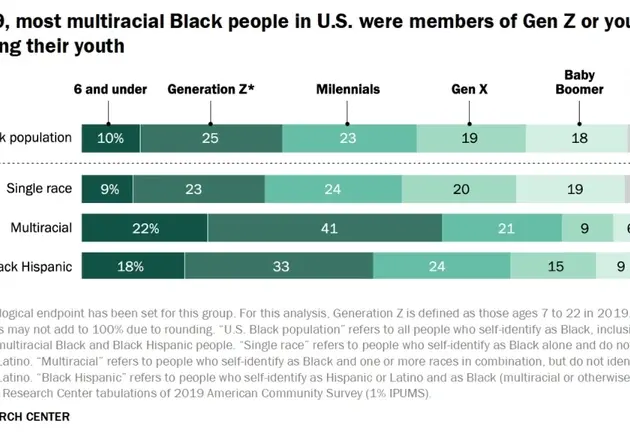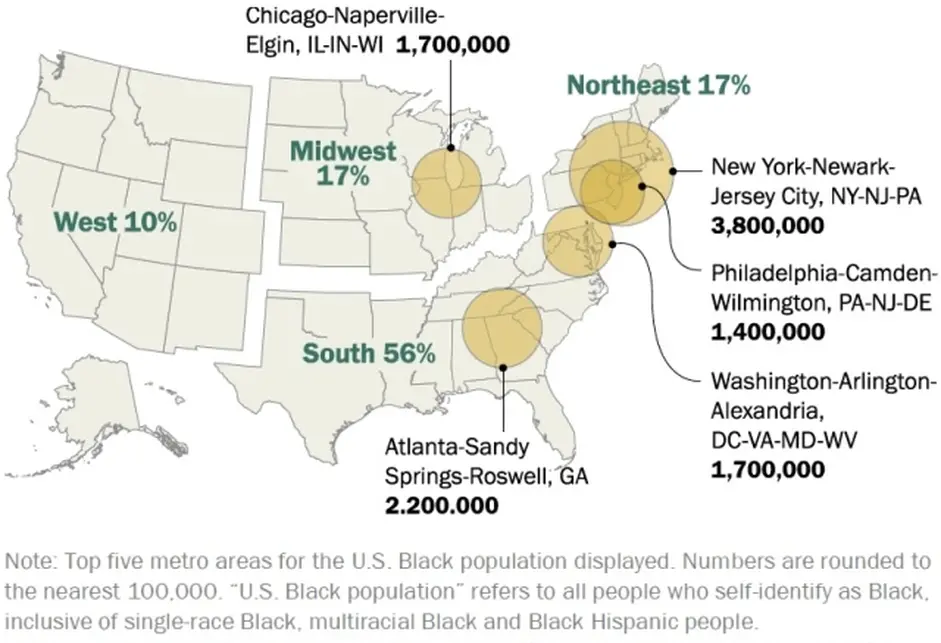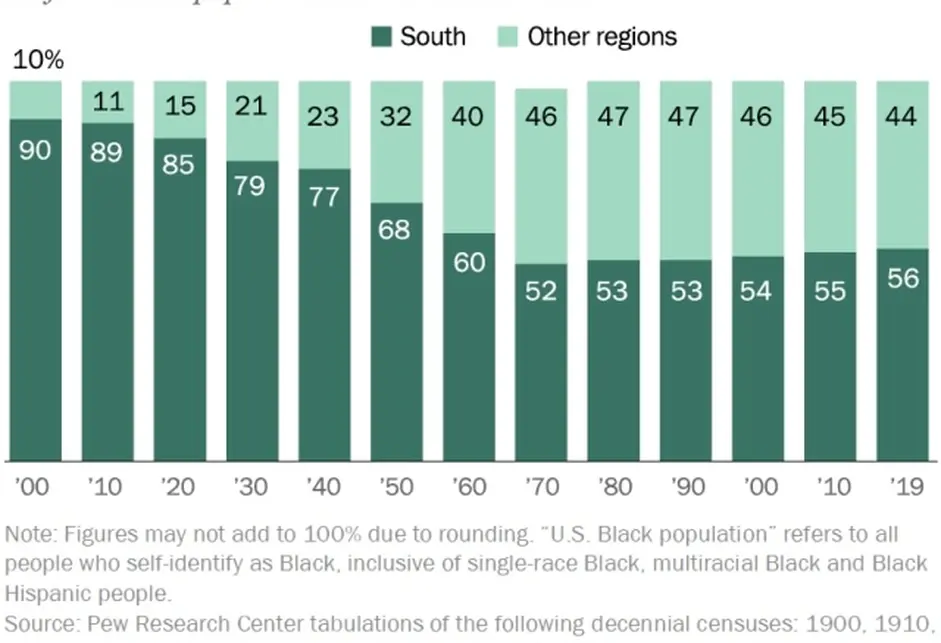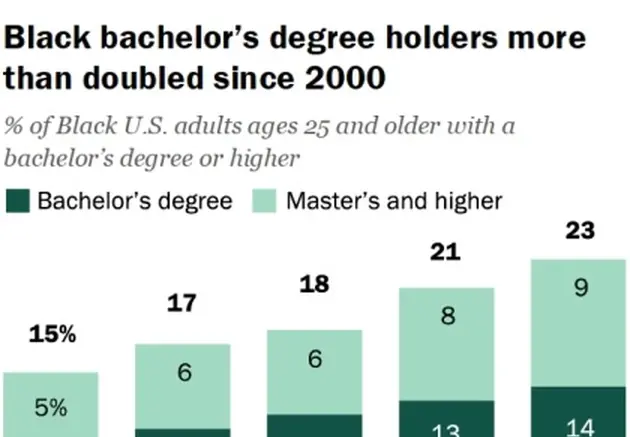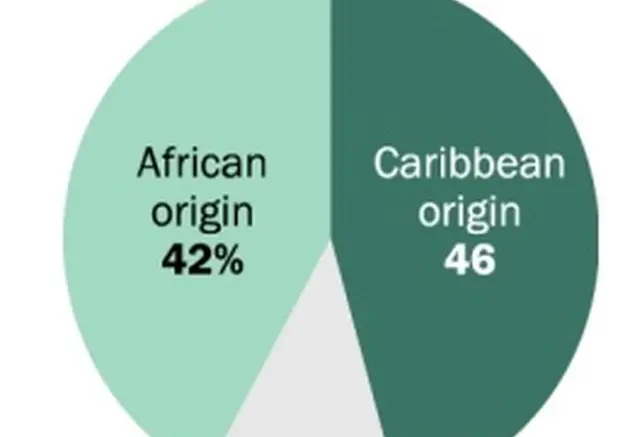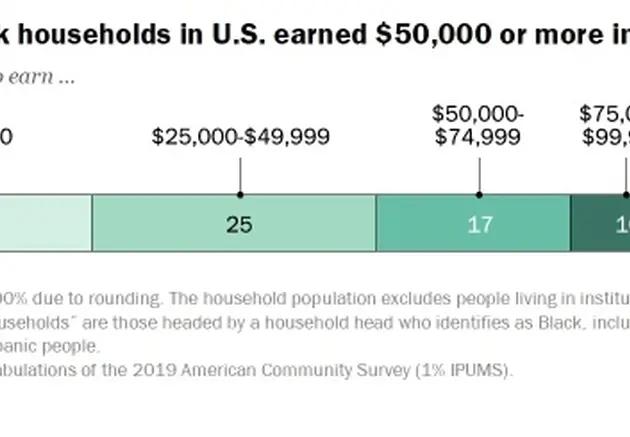The Black population of the United States is diverse. Its members have varied histories in the nation – many are descendants of enslaved people, while others are recently arrived immigrants. The Black population also has nuanced ethnic and racial identities reflecting intermarriage and international migration. As a result, there are key distinctions in demographic and economic characteristics between different parts of the national Black population, highlighting its diverse multitude of backgrounds.
The U.S. Black population is also growing. In 2019, 46.8 million people in the U.S. identified their race as Black, either alone or as part of a multiracial or ethnic background. That is up from 36.2 million in 2000.[1] The Black share of the U.S. population is higher today than in 2000 as well. About 14% of the national population said they were Black in 2019, up from 13% who did so in 2000. . . .
The nation’s Black population is changing in other ways too. A growing share are foreign born, the population is aging (though some segments are significantly younger), and a growing share are college graduates. These trends and more are explored in this report. . . .
Footnote
-
The 2000 decennial census is the first to allow Americans to select more than one race when asked about their racial background (for more, see “Race and Multiracial Americans in the U.S. Census”). Prior to 2000, decennial censuses allowed for only one race selection.
Figures and Data from the Pew Research Center
| All | Single race | % | Multiracial | % | Black Hispanic | % | |
|---|---|---|---|---|---|---|---|
| 2000 | 36,200,000 | 33,700,000 | 93% | 1,500,000 | 4% | 1,000,000 | 3% |
| 2006 | 39,200,000 | 36,400,000 | 93% | 1,700,000 | 4% | 1,000,000 | 3% |
| 2007 | 39,600,000 | 36.600,000 | 92% | 1,900,000 | 5% | 1,100,000 | 3% |
| 2008 | 40,300,000 | 36,800,000 | 91% | 2,100,000 | 5% | 1,400,000 | 4% |
| 2009 | 41,000,000 | 37,200,000 | 91% | 2,300,000 | 6% | 1,500,000 | 5% |
| 2010 | 42,100,000 | 37,900,000 | 90% | 2,500,000 | 6% | 1,700,000 | 4% |
| 2011 | 42,600,000 | 38,200,000 | 90% | 2,700,000 | 6% | 1,700,000 | 4% |
| 2012 | 43,200,000 | 38,500,000 | 89% | 2,800,000 | 6% | 1,900,000 | 4% |
| 2013 | 43,700,000 | 38,900,000 | 89% | 2,900,000 | 7% | 1,900,000 | 4% |
| 2014 | 44,300,000 | 39,300,000 | 89% | 3,100,000 | 7% | 1,900,000 | 4% |
| 2015 | 44,700,000 | 39,700,000 | 89% | 3,100,000 | 7% | 1,900,000 | 4% |
| 2016 | 45,200,000 | 39,800,000 | 88% | 3,400,000 | 7% | 2,000,000 | 4% |
| 2017 | 45,900,000 | 40,100,000 | 88% | 3,500,000 | 8% | 2,200,000 | 5% |
| 2018 | 46,300,000 | 40,400,000 | 87% | 3,600,000 | 8% | 2,300,000 | 5% |
| 2019 | 46,800,000 | 40,700,000 | 87% | 3,700,000 | 8% | 2,400,000 | 5% |
Source: Christine Tamir, “The Growing Diversity of Black America,” Pew Research Center, March 25, 2021. Read the full report on the Pew Research Center website.
